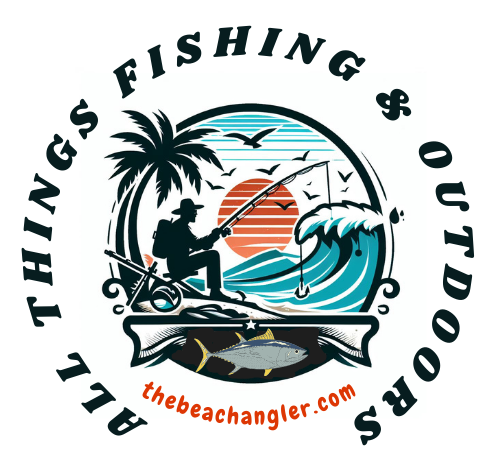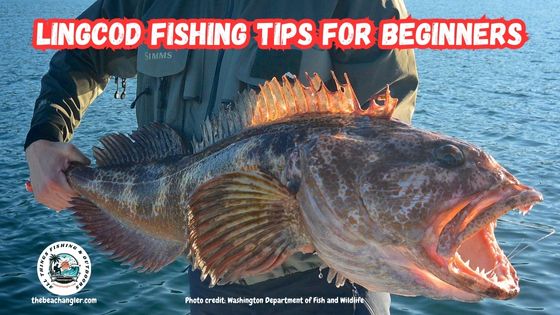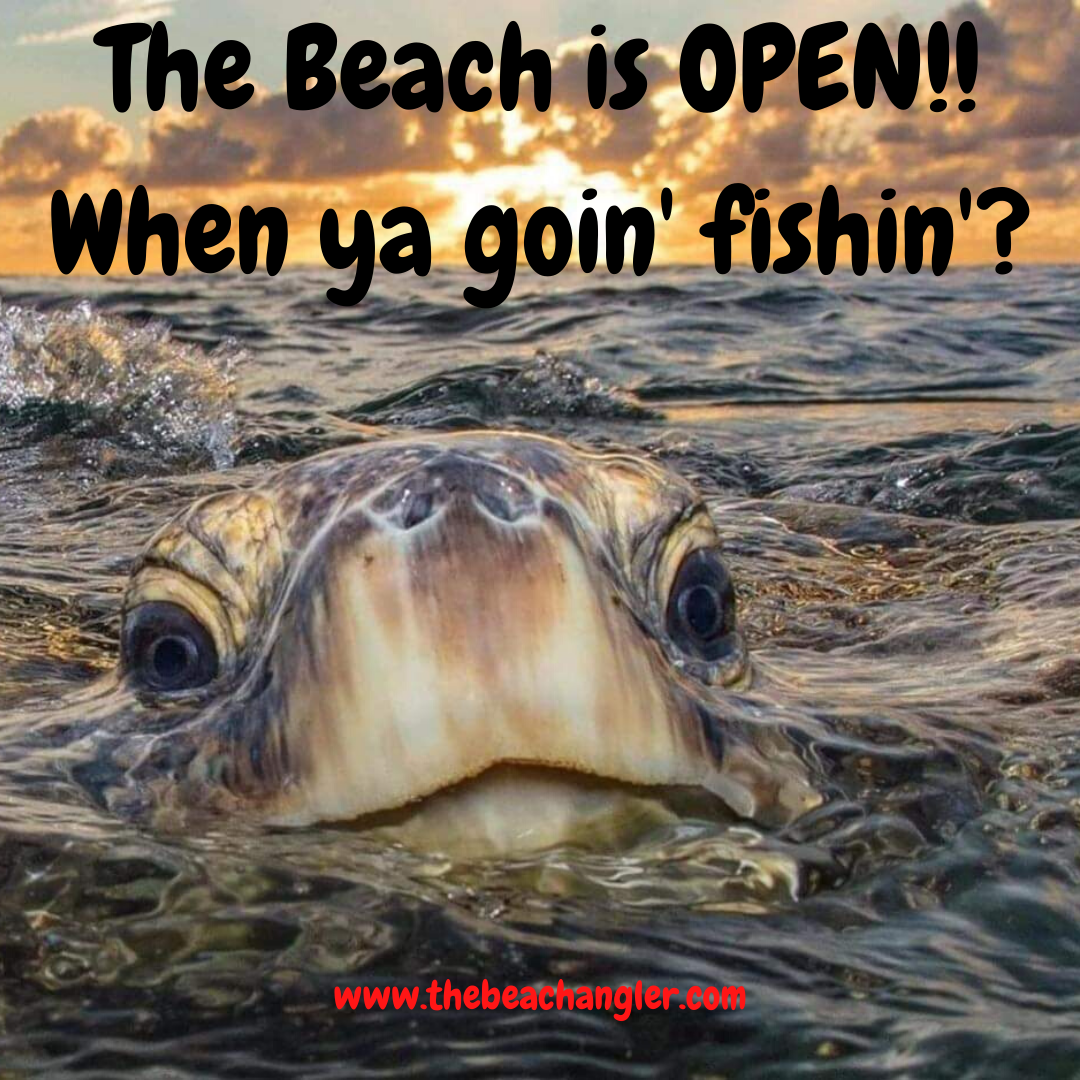Lingcod fishing is a unique experience that can be both thrilling and challenging, especially for beginners. These beasts of the sea are known for their aggressive nature and strong fight when hooked, making them a favorite among anglers. But before one can enjoy the thrill, it’s essential to know what lingcod are and where they typically reside.
QUICK LOOK: Lingcod Fishing Tips
- Identify Prime Locations: Lingcod are masters at ambush, and they love hiding in areas where they can easily surprise their prey. This means you need to focus your efforts on places with lots of underwater structure, like rocky reefs and ledges.
- Master the Jigging Technique: Jigging is the heart of lingcod fishing. It’s the dance you perform to entice one of these powerful fish to take the bait. A well-executed jigging technique can make the difference between a full catch and an empty boat.
- Select the Right Gear: Getting the right gear for lingcod fishing is crucial because these fish are not just strong but quite determined. You’ll need a setup that can handle their sheer power and the challenging environments they prefer.
- Choose the Best Baits: Picking the right bait can be a game-changer when fishing for lingcod. Whether it’s the realism of artificial lures or the natural allure of live bait, making the right choice can put you on the path to landing that prized lingcod.
- Proper Hooking and Retrieval: Once you feel a bite, setting the hook with confidence is crucial in securing your catch. Lingcod have a strong mouth, so a firm hook set is necessary to pierce their sturdy lip and keep them on the line. Keep a steady, even pressure on the line and adjust your drag if necessary to allow some give without losing control.
- Hire a Guide: If it’s your first time fishing for lingcod, booking a guided trip may be your best option. You will get firsthand knowledge from an experienced captain who will show you how to catch them and where to find them, and then you will be ready to venture out on your own.
Lingcod are not actually true cod; they’re part of the greenling family, commonly found along the Pacific Coast, ranging from Baja California to Alaska. They love rocky bottoms and are commonly found lurking near underwater structures like reefs and ledges. These spots give them the perfect vantage point to ambush their prey, which mostly consists of smaller fish and the occasional invertebrate.
Understanding the habitat and behaviors of lingcod is key to successful fishing. As their stronghold lies amid rocky reefs and ledges, having a solid plan about where you’ll fish is crucial. This will set the foundation for an enjoyable and productive fishing day.
Choosing the right technique is equally important. With lingcod, it’s not just about luck; skill and knowledge go a long way. Bottom fishing using jigging techniques has proven to be highly effective, particularly because it mimics the natural movement of injured prey – an irresistible sight for the aggressive lingcod.
Getting started on your lingcod fishing adventure doesn’t require a vast array of equipment, but having the right setup will certainly enhance your chances. With patience, practice, and perseverance, even a novice angler can master the art of catching lingcod.
The Right Spot – Identifying Prime Lingcod Locations
When it comes to lingcod fishing, location plays a big role in your success. Lingcod are masters at ambush, and they love hiding in areas where they can easily surprise their prey. This means you need to focus your efforts on places with lots of underwater structure, like rocky reefs and ledges.
To find these spots, it’s handy to have some geographical knowledge of the area you’re fishing in. Local fishing maps or online resources can help pinpoint these ideal locations. It’s amazing how much difference fishing in the right spot can make.
Don’t have access to fancy mapping tools? No problem. Sometimes it’s just about observing the water. Look for areas where you see a lot of surface activity. Birds diving or lots of smaller fish can be a good indicator that there’s something going on below.
When choosing your fishing area, consider the tides as well. Lingcod tend to be more active during certain tidal conditions, so it might be helpful to keep track of the tide charts. Generally, times when the tide is moving but not too drastically can be ideal.
Think about the depth too. Lingcod love hanging out at depths ranging from 30 to 150 feet, depending on the season and water temperature. So, make sure your gear is set to fish at these depths.
Fishing for lingcod in the right spot isn’t just about luck; it’s about smart planning. Spend some time researching your fishing location beforehand, and you’ll likely come back with a story worth telling.
Mastering the Jigging Technique
Jigging is the heart of lingcod fishing. It’s the dance you perform to entice one of these powerful fish to take the bait. A well-executed jigging technique can make the difference between a full catch and an empty boat.
- The key to good jigging is in the rhythm. Once your jig hits the bottom of the sea, give your rod a slight lift, then let it drop back down naturally. This creates a bouncing motion that mimics the erratic movements of injured prey, a sight lingcod find hard to resist. It’s all about getting into the groove and finding a pace that works.
- When starting out, it might take a few tries to get the hang of it. Don’t rush. Feel the weight of the jig, and let that guide your movements. The lure should move in a way that’s as lifelike as possible. Sometimes a slower pace works, other times a quick jiggle is what’s needed. Experiment and see what the fish respond to on any given day.
- Timing and patience go hand in hand with rhythm. When you feel a tap or a bite, it’s critical to stay calm. Avoid the rush to yank the rod. A measured, steady action often results in a firmer hook set and less chance of losing the fish.
- Perfecting your jigging skills is a combination of practice and intuition. It’s like learning any other skill; the more you do it, the better you get. Spend time on this technique, and you’re more likely to enjoy the thrilling battle that lingcod offer.
Selecting the Right Fishing Gear
Getting the right gear for lingcod fishing is crucial because these fish are not just strong but quite determined. You’ll need a setup that can handle their sheer power and the challenging environments they prefer.
- Start with a sturdy rod. A rod with a heavy action is ideal as it provides the strength to handle big strikes and the muscle to move fish away from rocky structures where they might try to hide once hooked.
- Pair your rod with a good quality reel, one that has a smooth drag system. Lingcod have a knack for powerful runs, and a decent reel will allow you to play these runs to your advantage without worrying about equipment failure.
- Don’t forget the line. Braided line is highly recommended for lingcod fishing. It offers excellent strength allowing you to pull fish out from rocks. A 50 to 65-pound test line should cover your bases.
- Tackle should also be beefy. Strong hooks that won’t bend or break are a must. Many anglers prefer using jigs with a single, sizeable hook as they tend to hook the fish more securely, simplifying the fight.
Setting up your gear correctly not only increases your chances of a successful catch but also makes the entire fishing experience more enjoyable and stress-free. With the right tackle, you’ll be ready to face the challenge of lingcod fishing head-on.
Choosing the Best Bait for Lingcod
Picking the right bait can be a game changer when fishing for lingcod. Although these fish are aggressive predators, presenting them with something enticing can increase your chances of a bite.
- Artificial jigs remain a favorite among anglers. They mimic the appearance and movement of injured prey, which is exactly what catches the interest of lurking lingcod. Swimbaits, particularly those resembling local baitfish, often outperform others due to their realistic wiggle and appearance.
- But don’t rule out live bait entirely. If you can get your hands on small rockfish or strips of squid, they can prove irresistible. Live baits offer a natural scent and movement that even the craftiest lingcod find hard to ignore.
- Trying out different baits could be the key to your success. Sometimes, switching things up based on the day’s conditions or the specific area you’re fishing in can lead to more hookups. It’s about being versatile and observant.
An often overlooked but handy tip is to keep an eye on what other successful anglers are using. It might just provide the insight you need to make a quick but effective bait change on the fly.
Whether it’s the realism of artificial lures or the natural allure of live bait, making the right choice can put you on the path to landing that prized lingcod.
Hooking and Retrieving: Ensuring a Successful Catch
Once you feel a bite, setting the hook with confidence is crucial in securing your catch. Lingcod have a strong mouth, so a firm hook set is necessary to pierce their sturdy lip and keep them on the line.
To set the hook effectively, when you sense the tug, give a purposeful yet smooth pull—avoiding a wild yanking motion which could result in a missed opportunity. Maintaining tension on the line is key here.
After a successful set, the battle is far from over. Lingcod are known for powerful runs and their ability to dive towards rocky caves and structures. Keep a steady, even pressure on the line and adjust your drag if necessary to allow some give without losing control.
Reeling in a lingcod requires patience and finesse. Consistently retrieve line while being prepared for counter pulls. If you’re reeling and notice resistance, pause to let the fish tire itself out or try gently steering it into open water to avoid snags.
Remember to handle the lingcod with care once it reaches the surface, both for your safety and to ensure the fish is unharmed if you plan to release it back into the water. Having a net handy can make landing much safer and easier.
Navigating the process of setting the hook and retrieving is as much about skill as it is about persistence. With experience, each catch becomes a rewarding testament to your growing proficiency as a lingcod angler.
Learn From an Experienced Guide or Charter
If you’ve never fished for lingcod, booking a trip with a charter or guide service could be your best option. There are numerous quality charters in the Pacific Northwest and Alaska that can put you on fish. Not only that, but you will learn first hand where to find them, how to catch them, and what gear you will need.
Then you when you do decide to venture out on your own after ling cod, you will have a solid foundation of knowledge and experience. I’ve used fishingbooker.com to book trips and have had great luck with their service. In the video below, you can watch a halibut fishing adventure out of Kodiak, Alaska that we booked through Fishing Booker.
Sustainable Practices and Safety Tips in Lingcod Fishing
Practicing sustainability in lingcod fishing is more important than ever. It’s about ensuring these incredible fish are around for future generations to enjoy. One way to do this is by adhering to catch and release practices when appropriate, especially for larger breeding individuals which help maintain the population.
While out on the water, always keep the legal limits in mind. Different regions have specific regulations concerning the size and number of fish you can keep. Following these rules helps preserve the local ecosystem and fish population.
Safety is crucial, particularly because lingcod fishing often takes place near rocky and rough underwaters. Always wear a life jacket, even if you’re an experienced swimmer. Conditions can change rapidly, and it’s better to be safe.
Watch your footing on the boat, and keep your fishing area clutter-free to prevent trips and falls. It’s always best to fish with a buddy or at least let someone know your plans when heading out alone. Remember, safety first.
Being environmentally mindful doesn’t just stop at the fish you catch. Dispose of any trash or fishing line properly to avoid harming other wildlife. Choosing biodegradable lures and using lead-free weights can minimize harmful environmental impact.
Combining safety practices with sustainability ensures a rewarding fishing experience, not just for us today, but for the anglers following in our footsteps.
Check Out Our Most Recent Articles:
- Fishing Lake Calcasieu: 14 Tips And Tactics

- Bassdash American Saltwater Cast Nets
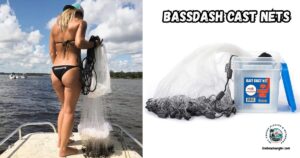
- 8 Tips on Wade Fishing The Flats For Redfish And Black Drum

- 5 Advanced Features of the Daiwa Tatula MQ LT Spinning Reel
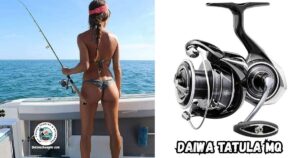
- How The Wind Can Be Your Friend When Fishing Inshore Waters

- 8 Key Features of the Daiwa Certate SW Saltwater Spinning Reel
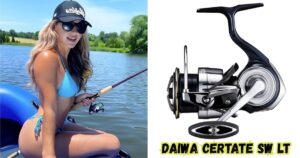
As always, stay safe, enjoy the journey and please try to leave it cleaner than you found it. If you have any comments, questions, ideas, or suggestions please leave them in the comment section below and I’ll get back to you ASAP. You can follow us on Facebook: Rex The Beach Angler, Instagram: thebeachangler7, Twitter: @AnglerBeach, and YouTube: Man Art Creations.
P.S. – Thanks so much for checking out our blog, we really appreciate it. Just so you know, we may receive a commission if you click on some of the links that appear on our site. This helps us keep our content free and up-to-date for everyone. We appreciate your support!
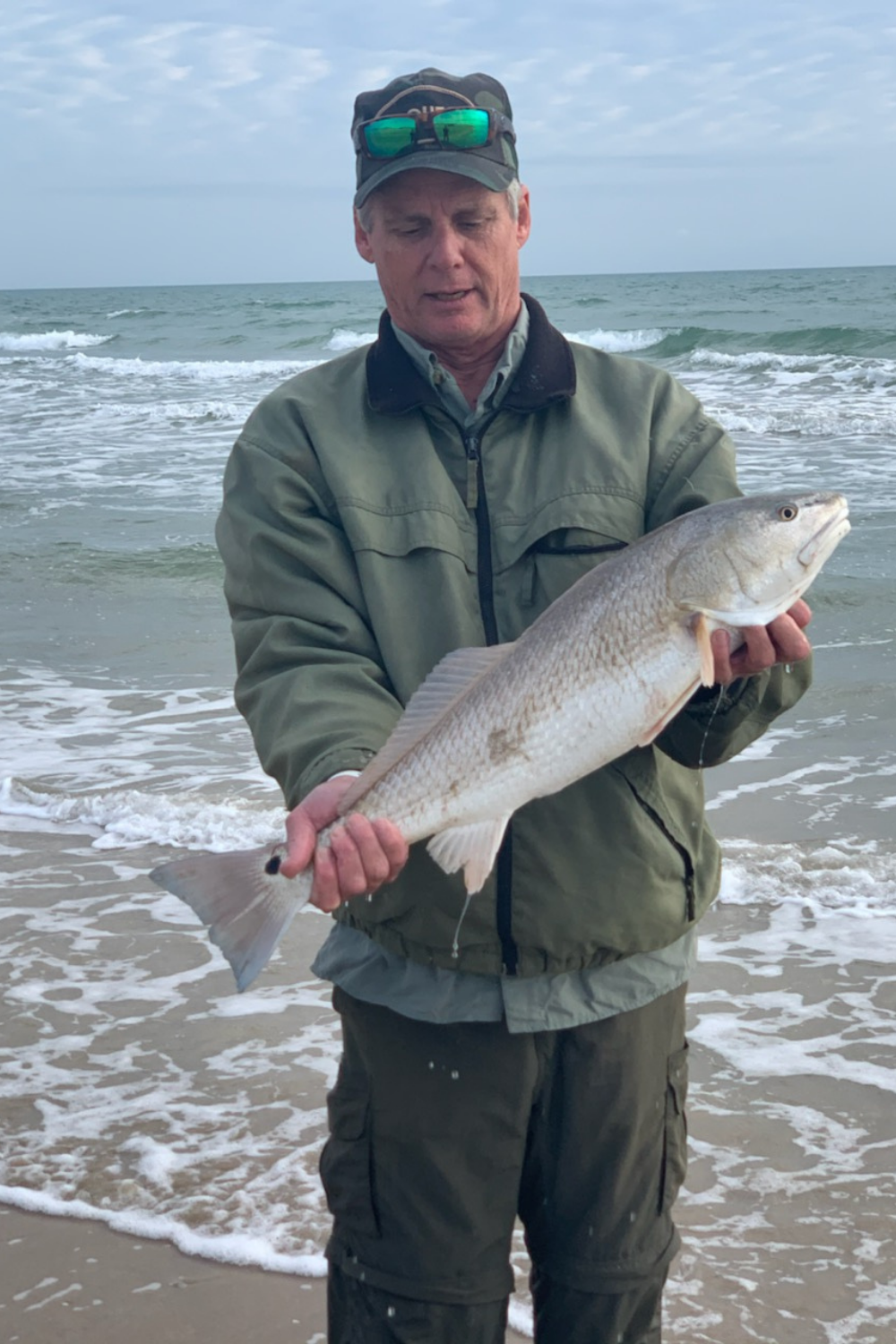
A life long surf fisherman with 50+ years of experience, I am also an avid hunter and outdoorsman. I will be sharing my passion for the outdoors with you so be prepared for hunting, fishing, camping, hiking and more. Along with gear reviews and the latest trends and innovations in the outdoor industry.
